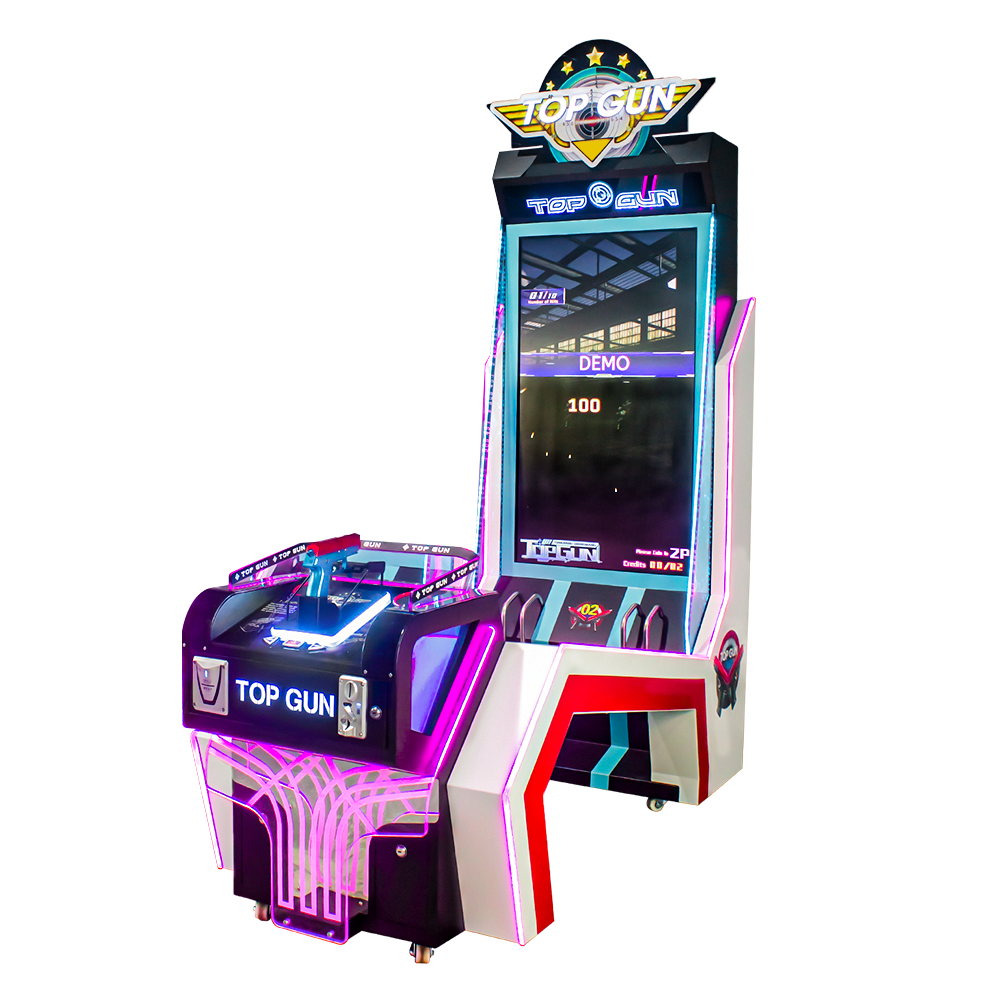Arcade games thrive due to their nostalgic appeal, engaging multiplayer experiences, diverse game selections, competitive tournaments, and unique physical play.
Table of Contents
ToggleNostalgic Appeal
Arcades have long captured hearts and minds, not only for fun, but also for fostering community. When video games emerged, neon-lit nights with classics like Pac-Man, Space Invaders, and Donkey Kong became hangouts for the young. These early digital innovations provided escapism in the 1980s and 1990s, revolutionizing entertainment.
Resurrecting nostalgia
Vintage arcades still resonate because they evoke childhood memories of simpler times. A 2021 study found that more than half of regulars enjoy retro games. This enduring interest speaks to the formative influence of early digital fun.
Capturing nostalgia
Businesses have capitalized on this nostalgia by pairing classic gaming with social drinking through “arcade” venues. Today, these venues can be found around the world, offering a retro update that blends vintage aesthetics with modern features.
Collectors’ passion
Meanwhile, a thriving market has emerged as collectors spend big bucks to buy and restore original machines, with these pioneering games showing deep sentiment and financial value. High replica demand prompted manufacturers to scale down the games but retain the gameplay and graphics for home hobbyists.
Social Interaction
Arcades are more than just places to play games; they are vibrant hubs that foster social connection and human interconnectedness. In an age where digital interactions are increasingly replacing face-to-face connections, arcades offer a concrete place where individuals can gather, compete, and experience collaboratively. These games transform isolated gameplay into collective, communal activities, allowing participants to engage directly with one another in either competitive or cooperative ways.
The Role of Multiplayer Games in Fostering Associations
Multiplayer arcade games create a compelling social dynamic, with players teaming up or competing head-to-head in real time. Games like Street Fighter and Dance Dance Revolution have cult followings and are known for intense, hard-fought duels that often draw onlookers. Tournaments and leagues that are regularly held in these arcade environments turn gaming into a spectator sport, filled with cheering crowds and shared enthusiasm.
Arcades as Social Places
Many arcades have evolved into key elements of local communities, organizing events and serving as gathering places for gamers of all ages. For example, some arcades integrate cafes or bars, making them popular destinations not only for gamers but also for casual outings with friends and family. These locations often report higher foot traffic in the evenings and on weekends, proving that social activities are just as appealing as gaming.
Community Building Through Events
Arcades often host birthday parties, corporate events, and other social gatherings, reinforcing their role as community hubs. They offer a unique entertainment option that encourages interaction and teamwork, making them ideal for larger groups seeking a common activity. By facilitating these events, arcades not only boost their own attendance, but they also boost local economic activity and support other nearby businesses.

Variety and Innovation
Arcade games are the best form of entertainment for both game fanatics and less skilled gamers. The variety of arcade games, from classic shooters and racing simulators to state-of-the-art virtual reality, gives gamers plenty of reasons to come back again and again. These games really appeal to the child in everyone, and regardless of age or ideology, there is always something that will make the average person exclaim, “Hey, this is like a game from my time.”
Technological progress drives gaming diversity
Arcade games are changing thanks to technological advancements. Moreover, arcade games today feature beautiful HD games or full VR experiences that were never dreamed of decades ago. Sega and Bandai Namco have been leading the innovation trend in arcade games. The team has modernized the traditional arcade space, making it a cutting-edge gaming arena with features such as VR headsets and motion sensing technology.
The appeal of retro and modern titles
After all, arcades are seen as time capsules for both modern and retro games. Older games like “Galaga” and “Frogger” appeal to those seeking a retro gaming feel, while newer games like “Mario Kart Arcade GP” attract younger gamers who are excited about the latest video game technology. A Merry-Go-Round of Old and New The Global Entertainment and Media Industry Outlook report shows that arcades with a mix of old games see 30% more visits than secondary arcades with a limited range.
Seasonal and themed game updates
With games changing regularly based on seasonal changes and themes, arcade players can enjoy something new—always offering the latest, fresh content, even if it’s nothing exciting. For example, it’s common for games to have special themed characters or levels for each holiday so they can attract and retain players year-round.
Competitive Spirit
The competitive nature of arcade games is enjoyed by people of all ages. Few other gaming platforms can match the sense of achievement and public recognition that comes from topping a global high score list or winning a tournament. Arcade games channel this competitive impulse by creating spaces where people can compete not only against the machine, but against each other.
High Scores as Social Currency
High scores are an important currency in the world of arcade games. As such, high scores often feature prominently in arcade games as a physical reward for the top players to stand out. This visibility, in turn, fosters a competitive scene where players constantly aim for higher scores than their friends or, if they are really good, global high scores posted online. For the most popular games like Pac-Man and Street Fighter, high scores and tournament wins can make players stars in the gaming community.
Organizing Tournaments
Promote tournaments, turning gaming into a public event where different players compete in arcade games. They can be as small and casual as an impromptu gathering of local players, or can include larger, more organized events with prizes (sometimes money) for the winners. The Evolution Championship Series, or EVO for short, is the largest and longest-running fighting game tournament in the world, but from a tournament series built around old-school arcade games, EVO now encompasses all fighting games.
Encourages regular participation
Both are ideal in terms of tournament setup and ongoing high score challenges, which means both seem poised to keep players coming back. The more often an arcade hosts tournaments, the more likely players are to come back and try to defend or win a title again. According to the Arcade Operators Alliance, arcades that regularly host tournaments have 40% more repeat customers than those that don’t.

Physical Engagement
In arcade games, players engage in a physical way that is difficult to replicate with a home gaming setup. The physical aspect of arcade games deserves a mention: pressing buttons and manipulating joysticks adds a layer of skill and immersion that cannot be underestimated. It is the cornerstone of arcade games and helps define them as a platform, but it also adds greatly to the charm and appeal of arcades.
Impact of physical controls on the gaming experience
Arcade machines feature a range of controls designed to tailor control inputs to the type of video game. In racing games, the steering wheel, pedals, and gearshifts are designed to faithfully recreate the real driving experience; in fighting games, the large, durable buttons and joysticks are built to withstand hundreds of hours of intense play. It allows players to experience a more immersive, realistic gaming experience. Dance Dance Revolution, for example, requires players to step on a dance mat to the music playing—not only does it allow you to play the game, but it also allows you to exercise.
Improves player skills and mastery
The physical aspect of arcade games is a higher level of skill and manual dexterity. These games often require physical memory and precision to be learned and executed, which can be endlessly satisfying… and addictive. Arcade gamers build coordination both physically and mentally that can be seen in their gameplay, which is why there is a big difference between the average player and the novice. Developing this skill is not only rewarding in itself, but also a spectator sport that allows the audience to enjoy the performance that comes with practice.
Gaming environments that immerse players
Arcade games literally wrap up the physical action of their respective games because they can be immersive spaces. Huge, ornate cabinets contain beautiful graphic displays, radical lighting, and crazy sound systems that make the experience of gaming far beyond a seated experience – and there are many more examples. The International Game Developers Association explains that according to statistics, immersive gaming settings can lead to retention rates that are 50% higher than standard video game consoles.



